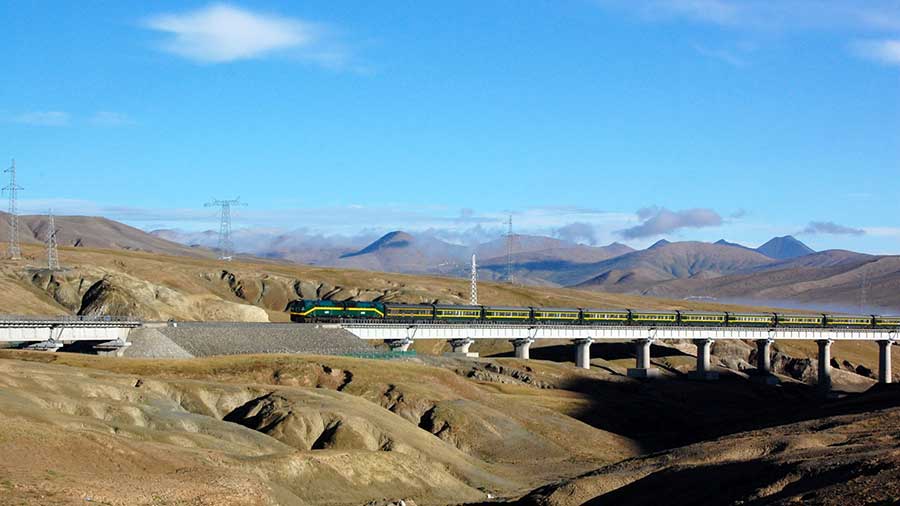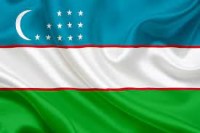Uzbekistan The Big Winner In China’s New Central Asian CKU Railway

The CKU Railways will create significant trade opportunities for Kyrgyzstan and Uzbekistan while linking China directly to the Middle East via Rail, with spin off benefits throughout the region.
China has finally pushed the ‘Go’ button on the long-awaited China-Kyrgyzstan-Uzbekistan (CKU) railway, with work on the route expected to start in spring next year. The Kyrgyz President, Sadyr Zhaparov, made the announcement last week.
“We will start in 2023 after the feasibility study is completed this year. The feasibility study is being prepared with the participation of three parties. There will be jobs. Our economy will boom,” said Zhaparov, noting that it has been 20 years since Kyrgyzstan wanted to build this railway.
Delays have been created by sheer logistical and technical difficulties as well as the high cost. Kyrgyzstan is mountainous and the line will need the boring of over 90 tunnels, while winter weather conditions are also difficult. China access will be from the Kashgar Rail Terminus in West Xinjiang Province which is already connected to China’s national rail network.
The CKU Route As A Transit Corridor To The EU & Middle East
The CKU route, which will become the southern part of China-Europe freight rail, will link China, Kyrgyzstan, and Uzbekistan to Central and Eastern Europe via Iran and Turkey. According to proposed plans, the total length of the CKU railway is about 523 kilometers, including 213 kilometers in China, 260 kilometers in Kyrgyzstan and about 50 kilometers in Uzbekistan.
From Uzbekistan, it can then connect with Uzbekistan-Turkmenistan rail to the Turkmenbashi Port on the Caspian Sea, where it can intersect with either Baku Port in Azerbaijan and onto markets in Georgia, Turkey and the Black Sea EU nations of Bulgaria and Romania, or it can head south to Iranian Caspian Ports such as Anzali, head south by rail (also being completed in 2023) via the International North-South Transportation Corridor (INSTC) to the southern Iranian Port at Chabahar. Maritime access then leads to the Middle East, East Africa, and India.
Uzbek officials have said that when completed, the railway will be the shortest route to transport goods from China to Europe and the Middle East, cutting the freight journey by 900 kilometers and saving seven to eight days in shipping time. Uzbekistan and Turkmenistan officials have ready been planning for bilateral transit connectivity along their onward section of the CKU route while Turkmenistan and Iran have been doing the same. Iran has also been discussing INSTC connectivity with Qatar.
Kyrgyzstan

The Kyrgyz economy is relatively small with a GDP of just under US$8 billion and a population of just 6.5 million. Exports are estimated to be worth about US$2 billion, and include gold, cotton, wool, garments, meat, mercury, uranium, electricity, machinery, and footwear. It imports about US$4.5 billion worth of goods, including oil and gas, machinery and equipment, chemicals, and foodstuffs. However, Kyrgyzstan’s location makes it ideal as a Central Asian service hub, as it also has a border with Afghanistan – and rail links are being planned. Kyrgyzstan’s foreign trade was up 19.5% in 2021, and the country can be expected to develop as a light manufacturing and processing hub for China-Central Asian trade. Spotting the opportunity, Russia’s Wildberries E-Commerce platform has just established operations in the country.
Uzbekistan

Uzbekistan is a major plum for the CKU – the country is undergoing significant economic reforms and has been opening its economy. That has resulted in significant recent trade agreements being put into effect with both the UK and European Union and impacting thousands of products which can now be exported duty-free. That evolution has also been apparent in the capital markets, where the Uzbeki Government issued its first Eurobond in 2020, which was eight times oversubscribed. In August last year Uzbekistan was one of the first countries in the region to issue a Sovereign Sustainable Development Goals (SDG) bond, while 15 Uzbeki major SOEs and banks are preparing for future privatization among thousands of local companies looking to do so.
It can be expected that the Uzbeki trade agreements will be a magnet for Chinese and Russian investors looking to set up Uzbek facilities for export manufacturing. Uzbekistan is landlocked but has regional connectivity north to Kazakhstan and onto Russia, and west to Turkmenistan and the INSTC.
See Also: Uzbekistan – An Economic Role Model For Central Asia’s Belt & Road Initiative
The CKU To Kazakhstan & Russia
From Uzbekistan, the CKU can connect with existing freight road, rail and air to Kazakhstan, as well as onto Russia. It should be noted that Uzbekistan is an observer member of the Eurasian Economic Union (EAEU) and can be expected to join the EAEU in the new future. The EAEU includes Armenia, Belarus, Kyrgyzstan, Kazakhstan, and Russia. It has Free Trade Agreements with Iran and Vietnam and is in negotiations with, amongst others, Egypt, the UAE, India and numerous other ASEAN and some African nations. For their part, Russian investors very much see Uzbekistan as a potential trade partner and are looking to relocate some Russian manufacturing to Uzbekistan in order to get around sanctions.
Uzbekistan and Kyrgyzstan have already been discussing increased bilateral trade, while its foreign trade increased by 34.4% last year, with China being its largest trade partner. Uzbekistan and Russia have also been discussing improvements in bilateral trade.
The CKU To Turkmenistan, the European Union & the Middle East
Uzbekistan also has rail connectivity with Turkmenistan, which gives it access to the Caspian Sea. This is an increasingly important route for Uzbeki imports and exports as it gives access to the Caucasus and European Union to the West via the Azerbaijan Port of Baku. To illustrate how this is developing, Uzbek-Georgian trade was up 88% in the first two months of 2022. Turkmenistan and Uzbekistan have also been discussing the creation of a Central Asian transit corridor.
Rail connectivity West via Baku through Georgia and Turkyie still has bottlenecks, however these should be resolved over the course of the coming few months and certainly by mid-2023. This southern route from China to Europe has become increasingly important given that the northern route via Russia has been closed. We discussed this here.
In terms of the Middle East, this involves the INSTC route, which would connect from Turkmenistan’s Caspian Sea Port to Iran’s Anzali Caspian Port. The maritime distance is 304 nautical miles. From there, goods can access the significant Iranian markets, while also be transited south through Iran to the Gulf Port at Chabahar. At present this is a road haulage trip, however the remaining rail sections are due to completed next year. Chabahar Port has been significantly invested in by India and was originally intended to be a primary Iran-Indian trade corridor as it bypasses Pakistan.
However, the INSTC and Chabahar have taken on greater strategic significance, and also provides access to the Middle East, East Africa and elsewhere in South East Asia. Discussions are on-going as concerns extending INSTC routes to Saudi Arabia, the UAE and beyond.
Other CKU Connectivity
Various other rail projects are in hand or being planned that will also enhance the potential for the CKU. The Pakistan-Iran-Turkey Rail Freight Line has recently reopened, while rail connectivity onwards from Pakistan to China (creating a total Central Asian rail loop) is under discussion as part of the China-Pakistan Economic Corridor.
All of Central Asia wishes to see Afghanistan rehabilitated, and the country has signed an MoU with Uzbekistan and Pakistan to build a trans-Afghani railway that would bisect Afghanistan north-south and connect Uzbekistan with Pakistan’s Karachi Port. Turkmenistan has also been building rail to the Western Afghanistan border, with a link to Herat, Afghanistan’s industrial hub, being discussed. Iran, which also borders Afghanistan, is involved in similar discussions, with planned Iranian-Afghan routes also connecting to China. As can be seen, the CKU railway is a regional game changer.
Related Reading
About Us
Chris Devonshire-Ellis is the Chairman of Dezan Shira & Associates. The firm assists British and Foreign Investment into Asia and has 28 offices throughout China, India, the ASEAN nations and Russia. For strategic and business intelligence concerning China’s Belt & Road Initiative please email silkroad@dezshira.com or visit us at www.dezshira.com





